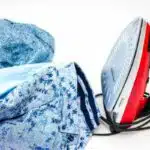As an expert on flags, it is my duty to educate the public on proper flag etiquette, including how to wash or clean the American flag. The American flag is a symbol of our nation’s pride and unity, and it is important to treat it with respect and care.
While many may believe that washing or cleaning the American flag is unnecessary, it is important to keep in mind that over time, exposure to the elements and outdoor conditions can cause dirt and debris to accumulate on the fabric. It is also important to note that improper cleaning methods can damage the fabric and affect its appearance. Therefore, understanding how to properly wash or clean the American flag is crucial in maintaining its integrity and preserving its longevity. In this article, I will provide valuable insights on how to wash or clean the American flag according to proper flag etiquette guidelines.
Understanding Proper Flag Etiquette
The American flag is a symbol of the United States and its values. It represents freedom, justice, and democracy. Understanding flag symbolism is important for anyone who wants to display the American flag properly. The stars on the blue field represent the states in the Union, while the stripes represent the original 13 colonies that declared independence from Great Britain.
Proper ways to display the American flag are outlined in the United States Flag Code. According to this code, the flag should be flown from sunrise to sunset unless it is illuminated at night. It should never touch the ground or any other object when being displayed. When hung vertically, it should have the blue field of stars to your left as you face it.
It is important to treat the American flag with respect and dignity. This means not using it for advertising purposes or as a decoration that could be easily discarded. By following proper flag etiquette, you can show your appreciation for what this symbol represents and honor those who have fought and died for our country.
Understanding proper flag etiquette lays a foundation for why cleaning the American flag is important. As a revered national symbol, it deserves to be handled with care and maintained appropriately. Failure to do so would not only damage its physical appearance but also dishonor its symbolic value.
Why Cleaning The American Flag Is Important
The American flag is a symbol of national pride and respect, and it is important to show this respect by taking the time to properly clean and maintain the flag. Cleaning the flag also helps to preserve its cultural significance and demonstrates the value placed on this symbol of national unity. Regular cleaning of the flag is necessary to prevent dirt and grime from building up, which can detract from its appearance and cause the fabric to deteriorate. The best way to clean the flag is to hand-wash it using a mild detergent and cool water, and air-dry it on a flat surface.
Respect For The Flag
When it comes to the American flag, respect is of utmost importance. It is not just a piece of cloth but a symbol of our nation’s values and ideals. Teaching children about the proper care and handling of the flag can instill in them a sense of patriotism and appreciation for what it represents. One way to show respect for the flag is by properly cleaning it when necessary.
When displaying the American flag indoors, it is important to ensure that it is clean and free from dirt or stains. Regular cleaning is recommended to maintain its appearance and integrity. However, improper cleaning methods can damage the fabric and cause it to deteriorate over time. Therefore, it is crucial to follow proper cleaning guidelines to protect the flag while keeping it clean.
In conclusion, respecting the American flag includes taking care of its cleanliness through proper washing or dry-cleaning methods. Teaching children this aspect of caring for the flag can instill in them a deeper appreciation for our country’s symbols and values. Displaying the flag indoors also requires careful attention to its maintenance, so following appropriate cleaning procedures will ensure that we honor this important symbol with dignity and pride.
Cultural Significance
As a flag expert, it is important to recognize the cultural significance and historical symbolism of the American flag. The flag represents the values and ideals that make our nation great, including freedom, justice, and equality. It has been a symbol of hope and inspiration for generations of Americans, and it continues to hold a special place in our hearts today.
Understanding the cultural significance of the American flag is essential when discussing why cleaning it is important. A dirty or stained flag not only looks unsightly but also disrespects the ideals it represents. By properly cleaning and maintaining the flag, we show our appreciation for its historical significance while also honoring those who have fought to defend it.
In conclusion, recognizing the cultural significance and historical symbolism of the American flag is crucial when discussing why cleaning it is important. By following proper cleaning guidelines, we can maintain its appearance while showing respect for what it represents. As members of society, we have a responsibility to honor this symbol with dignity and pride while serving as examples for future generations to do so as well.
Types Of American Flags And Their Cleaning Needs
When it comes to cleaning the American flag, it’s important to consider the type of material it is made from. Different materials require special care in order to maintain their appearance and integrity over time. Flags made from nylon, for example, should be hand washed with a mild detergent and hung to dry. On the other hand, flags made from cotton or wool may require dry cleaning to avoid shrinking or damage.
Another consideration when cleaning an American flag is whether or not it has any special features or embellishments that require extra care. Some flags may have embroidered stars or other decorations that could be damaged if exposed to harsh detergents or high heat during washing. In these cases, it’s best to seek out professional cleaning services that specialize in caring for flags and other delicate fabrics.
It’s also worth noting that some American flags are designed specifically for outdoor use and are meant to withstand exposure to the elements. These flags may be made from materials like polyester or nylon that are more resistant to fading and wear caused by sun exposure and moisture. However, even outdoor flags will eventually show signs of wear and tear over time and may need to be replaced periodically in order to maintain their appearance and functionality.
- Consider the type of material your flag is made from before attempting any cleaning methods.
- Look for any special features or embellishments on your flag that may require extra care during cleaning.
- Seek out professional cleaning services if you’re unsure about how best to care for your flag.
- Remember that even outdoor flags will eventually need replacing in order to maintain their appearance and functionality over time.
As you begin assessing the condition of your flag, keep in mind the various factors that can impact its overall appearance and longevity. By taking a careful approach to cleaning and maintenance, you can help extend the life of your American flag while ensuring that it continues to look its best no matter where you choose to display it.
Assessing The Condition Of Your Flag
After identifying the type of American flag that you have, it is important to assess its condition before cleaning. The condition of the flag will determine the cleaning method to be used and whether or not professional cleaning services are required. Flags that are frequently displayed outdoors may require more frequent washing as they are more susceptible to dirt, dust, and environmental factors such as pollution and weather conditions. On the other hand, flags that are seldom used may require less frequent washing.
Assessing flag condition involves examining the overall appearance of the flag for signs of wear and tear, fading, discoloration, and damage such as tears or holes. If any part of the flag appears to be frayed or damaged, it may need to be replaced rather than washed. Additionally, if a flag has been in contact with any chemical substances or has been contaminated by anything that may pose a health risk (such as animal feces), it should be disposed of immediately rather than cleaned.
Flag cleaning frequency varies depending on usage and exposure to outdoor elements. In general, flags that are flown on a daily basis outdoors should be washed at least four times per year while flags flown indoors can be washed once per year. However, these guidelines should be adjusted based on local weather conditions which can affect how often a flag needs to be cleaned. Proper maintenance of your American flag ensures its longevity and continued display with pride.
Moving forward from assessing your flag’s condition, preparing your American Flag for cleaning is an important step in ensuring you don’t damage it during the process.
Preparing Your Flag For Cleaning
As an expert in flag care, I understand the importance of keeping our national symbol clean and well-maintained. Before jumping into the cleaning process, it’s crucial to prepare your flag for the task at hand. The first step is to identify the type of material your flag is made of, as this will determine which cleaning solutions are safe to use.
If your flag is made of cotton or polyester, you can safely use a mild detergent mixed with warm water to remove dirt and grime. However, if your flag is made of silk or wool, special care must be taken as these materials are more delicate and require gentler cleaning solutions. It’s important to avoid harsh chemicals such as bleach or fabric softeners as they can damage the material and cause discoloration.
Once you have identified the type of material your flag is made of and chosen an appropriate cleaning solution, it’s time to move onto the next step: handwashing your flag.
Transition: In order to properly clean your flag without causing any damage or wear and tear on its delicate fibers, it’s important to follow a precise set of instructions for handwashing.
Handwashing Your Flag
When it comes to washing your American flag, handwashing is a safe and effective method. Begin by filling a clean sink or basin with cold water and a mild detergent. Avoid using hot water or bleach, as this can cause the colors of the flag to fade or bleed.
Gently swirl the flag in the soapy water for a few minutes, making sure to pay extra attention to any areas that are particularly dirty or stained. Rinse thoroughly with cold water until all soap suds have been removed. To dry, lay the flag flat on a clean surface or hang it on a clothesline, making sure not to expose it to direct sunlight.
Properly folding your flag after washing is just as important as how you washed it. The traditional way of folding involves bringing the corners of the flag together into a triangular shape and then continuing to fold until only the blue field with stars is visible. This ensures that your flag remains neat and presentable for future use. Additionally, if extreme weather such as high winds or heavy rain is expected, be sure to take down and store your flag properly to prevent damage.
Moving forward, machine washing your flag may seem like an easier option but requires caution. It’s important to read care labels before placing your flag in the machine and avoid using fabric softeners or bleach. Moreover, never place your flag in the dryer as high heat can cause shrinkage and damage its fibers. By following these steps, you can ensure that your American flag remains in good condition for years to come.
Machine Washing Your Flag
According to a survey conducted by the American Legion, around 62% of Americans own an American flag. It is a symbol of patriotism and unity for many people, which is why it is essential to keep it clean and well-maintained. When it comes to washing your flag, machine washing can be a convenient option. However, you need to take necessary precautions to avoid damaging the fabric.
Before putting your flag in the washing machine, make sure that you read the care label carefully. Some flags may require handwashing or dry cleaning only. If your flag is suitable for machine washing, then select a mild detergent that does not contain bleach or fabric softeners. These chemicals can cause discoloration and damage to the fabric.
When selecting a detergent for your flag, choose one that is gentle on fabrics and does not contain any harsh chemicals. Avoid using hot water as it can cause shrinkage and fading of colors. Use cold or lukewarm water instead and set the machine cycle on gentle or delicate mode. Once the wash cycle is complete, remove the flag from the washing machine immediately and hang it up to dry in a well-ventilated area.
To ensure that your flag lasts longer, it’s crucial to wash it regularly without compromising its quality. By following these machine washing precautions and selecting the right detergent, you can keep your American flag looking new for years to come. In our next section, we will discuss how to properly dry your flag without causing any damage to its fabric or colors.
Drying Your Flag
After machine washing your American flag, the next step is to dry it. One option is to use a dryer, but it is important to handle the flag carefully to avoid any damage or shrinkage. If you choose this method, use a low heat setting and remove the flag promptly once it is dry. Be sure not to over-dry the flag as this can cause wrinkles and other damage.
Another option for drying your American flag is air drying. This can be done by hanging the flag outside on a clothesline or indoor on a hanger. It is important to hang the flag in a shaded area as direct sunlight can cause fading. Additionally, make sure that the flag is completely dry before storing it away.
To ensure that your American flag remains in pristine condition, consider these additional tips:
- Do not fold or store a damp or wet flag
- Avoid using fabric softeners or bleach when washing
- Store your clean and dry flag in a cool and dry place
By following these guidelines, you can help preserve the integrity of your American flag for years to come. In the next section, we will discuss how to properly iron your flag if necessary.
Ironing Your Flag
The recommended ironing temperature for the American flag is between medium (cotton) and low (synthetic). When ironing the flag, it is important to use a gentle press and to move the iron back and forth slowly to avoid scorching the fabric. When finished, the flag should be hung with the stars facing left. Care should be taken to ensure the flag is not wrinkled or creased while ironing.
Ironing Temperature
When it comes to ironing your flag, adjusting the temperature is an important consideration. The American flag is made of delicate fabrics that can easily be damaged by high heat. Thus, it is crucial to use proper ironing techniques to avoid damaging the patriotic symbol.
To start, adjust the ironing temperature based on the fabric of your flag. Typically, flags are made of either cotton or polyester, and each type requires a different level of heat. Cotton flags can handle higher temperatures than polyester ones, so set your iron between 300-350°F for cotton flags and 275-300°F for polyester flags. Also, make sure to test a small area before starting to ensure that the temperature does not cause any damage.
When ironing your flag, it’s essential to use gentle techniques. Avoid pressing too hard or leaving the iron in one place for too long. Instead, move the iron in a circular motion over the fabric while applying light pressure. This approach will help prevent any burns or scorch marks on your beloved stars and stripes while still producing crisp lines and folds. Remember, taking care when ironing will not only help preserve your flag but also show respect for this significant symbol of our nation’s history and ideals.
Ironing Techniques
Ironing your flag is an essential step in maintaining its appearance and preserving its significance. One crucial consideration when ironing your flag is the temperature of the iron. Using too high a temperature can damage the delicate fabrics that make up the American flag, while using too low a temperature may not produce crisp lines and folds. To avoid any damage to your flag, it is important to use proper ironing techniques, including adjusting the ironing temperature based on the type of fabric.
When it comes to choosing an iron for your flag, it is recommended to use a steam iron. Steam irons are better at gently removing wrinkles and creases from delicate fabrics such as those used in flags than dry irons. Additionally, steam irons can help prevent scorch marks that may occur with dry irons. However, before using any iron on your flag, ensure that it’s clean and free of rust or other debris that could transfer onto the fabric.
Once you have selected an appropriate iron and adjusted the temperature accordingly, it’s time to put your gentle ironing techniques into action. When ironing your flag, be sure to move the iron in a circular motion over the fabric while applying light pressure. Avoid pressing too hard or leaving the iron in one place for too long as this may cause burns or scorch marks on your beloved stars and stripes. With these techniques in mind, you can safely and effectively maintain your American flag’s appearance while showing respect for its history and significance.
Dry Cleaning Your Flag
After knowing how to properly wash or clean your American flag, it is equally important to know how to dry it. Dry cleaning your flag is one of the alternatives in drying your flag without using water. This method makes use of chemicals and solvents in removing dirt and stains from the fabric.
One of the pros of dry cleaning is that it does not involve any water, which could potentially damage the fabric’s color and texture. It also ensures that no shrinkage or distortion occurs during the cleaning process. However, there are also cons to dry cleaning, such as its potential harm to the environment due to the use of chemicals.
If you choose to dry clean your American flag, make sure to take it to a professional cleaner who has experience handling flags. Another alternative is air drying your flag by hanging it on a clothesline or laying it flat on a clean surface away from direct sunlight. In the next section, we will discuss how to properly store your American flag after cleaning or drying it.
Storing Your Flag
- Properly folding the flag is a critical part of its care and storage to ensure it retains its proper shape and form.
- When storing the flag indoors, it is important that the flag is placed in an area where it will not be subjected to any moisture or extreme temperatures.
- To ensure the flag remains vibrant, it is best to keep the flag out of direct sunlight, as this will cause premature fading.
- The flag should never be placed on the floor or in contact with any object that could potentially cause damage.
- It is recommended that the flag be stored in a bag or box that is designed specifically for flags, as this will provide better protection from dust, dirt, and other potential hazards.
- When storing the flag outdoors, it should be placed in an area where it is not exposed to rain, snow, or direct sunlight.
Folding
Proper folding is a crucial part of storing your flag. This ensures that it retains its shape and does not get damaged during storage. There are different display techniques for folding the American flag, including the military-style fold, which involves 13 folds symbolizing the original 13 colonies of America.
Storage considerations are also important when it comes to preserving your American flag. The flag should be kept in a dry and cool place, away from direct sunlight or moisture. If you plan on storing it for an extended period, consider using acid-free tissue paper to prevent discoloration and damage.
When it comes to outdoor use, the size of your flag matters. A larger flag may require professional cleaning services due to its size and weight. However, small flags can be washed at home using DIY cleaning techniques such as mild soap and warm water. Material care is essential when cleaning your American flag at home; ensure you follow the manufacturer’s instructions to avoid damaging the fabric.
In conclusion, proper folding is crucial in preserving your American Flag’s condition when storing it. Storage considerations such as keeping it in a dry and cool place are equally important to prevent damage. When cleaning, DIY cleaning techniques can do for smaller flags while larger ones may require professional cleaning services due to their weight and size.
Storing Indoors
Proper storage techniques are crucial in preserving the condition of your American flag. When stored indoors, there are several options to consider. First, it is essential to choose a storage location that is dry and cool, away from direct sunlight or moisture. This will help prevent discoloration and damage to the fabric over time.
Secondly, it is important to choose a storage container that provides adequate protection for the flag. Options include acid-free boxes or bags made specifically for storing flags. These containers can help protect the flag from dust, dirt, and other environmental factors that can cause damage.
Lastly, when storing your flag indoors, it is best to avoid folding it too tightly or placing any heavy objects on top of it. Doing so can cause creases or wrinkles in the fabric that may be difficult to remove later on. By following these simple guidelines, you can ensure that your American flag remains in pristine condition for years to come.
Protecting From Light
As a flag expert, it is crucial to understand the various factors that can affect the condition of your American flag, especially when it comes to storage. In addition to choosing a dry and cool location and using an appropriate storage container, protecting your flag from light is also essential.
Exposure to direct sunlight or other sources of light can cause fading and discoloration in the fabric over time. To prevent this, it is best to store your flag in a dark area away from any windows or other sources of natural light. If this is not possible, consider covering the storage container with a cloth or other opaque material to block out any light that may be present.
In addition to protecting your flag from light, it is also important to handle it with care when storing and transporting. Avoid folding or creasing the fabric too tightly, as this can cause permanent damage. Instead, fold the flag gently and place it in its storage container using acid-free tissue paper for added protection. By following these simple storage tips and taking precautions to protect your flag from light, you can ensure that it remains in pristine condition for years to come.
Common Mistakes To Avoid When Cleaning Your Flag
As a flag expert, I have seen many common mistakes people make when cleaning their flags. One of the most significant mistakes is using harsh chemicals or detergents that can damage the fabric. It is essential to use a mild detergent and cold water when washing your flag. Harsh chemicals can cause the colors to fade, and the fabric to weaken, ultimately shortening the lifespan of your flag.
Another mistake people often make is not properly handling their flags during the cleaning process. Flags should be handled with care and respect at all times. When washing your flag, avoid twisting or wringing it out as this can cause damage to the fabric. Instead, gently squeeze out excess water and allow it to air dry. Be sure not to expose your flag to direct sunlight as this can also cause fading.
Lastly, one common mistake people make is not storing their flag correctly after cleaning it. Always ensure that your flag is completely dry before storing it away in a cool, dry place. Never store a damp or wet flag as this can lead to mildew growth and further damage.
Transition:
Now that you know some common mistakes to avoid when cleaning your flag let’s move on to how often you should clean it.
How Often Should You Clean Your Flag
As a flag expert, I am often asked how often one should clean their flag. The frequency with which you should clean your American flag will depend on a few factors, including where the flag is displayed and the weather conditions in your area. If your flag is displayed indoors or in an area protected from the elements, it may only need to be cleaned once every year or two. However, if your flag is displayed outside and exposed to harsh weather conditions, it may need to be cleaned more frequently.
When it comes to cleaning your American flag, there are several methods you can use. Some people prefer to hand-wash their flags using mild detergent and cold water. Others choose to machine-wash their flags on a gentle cycle with cold water. Regardless of which method you choose, it’s important to handle your flag with care and avoid using harsh chemicals or bleach that could damage the fabric.
Ultimately, how often you should clean your American flag will depend on your individual circumstances. By paying attention to where and how you display your flag and staying on top of routine maintenance, you can ensure that your flag remains in good condition for years to come. If you notice any damage or wear and tear during routine cleaning, be sure to take appropriate action promptly to prevent further damage. In the next section, we’ll discuss what steps you should take if your American flag becomes damaged.
What To Do If Your Flag Is Damaged
If your American flag has been damaged, it is important to take steps to repair it properly. Repairing tears and frayed edges can help extend the life of your flag and maintain its integrity as a symbol of our country.
To repair tears in your flag, use a needle and thread that matches the color of the flag. Thread the needle and tie a knot at one end. Carefully stitch the tear together, using small stitches that are close together. Be sure to keep the stitching as inconspicuous as possible.
For frayed edges, use scissors to trim away any loose threads. Be careful not to cut into the fabric of the flag itself. You may also want to consider reinforcing the edges with hemming tape or by sewing a new edge onto the flag.
- Keep your American flag out of direct sunlight to prevent fading.
- Always handle your flag with clean hands.
- Store your flag in a cool, dry place when it is not being flown.
- Consider flying multiple flags and rotating them regularly to extend their lifespan.
Remember, taking care of your American flag is an important responsibility for all citizens. By properly repairing any damage that occurs, you can continue to show respect for this important symbol of our nation’s values and history.
As you can see, repairing tears and frayed edges is an easy process that anyone can do with a little patience and care. By taking these steps, you can help ensure that your American flag remains in good condition for years to come. In the next section, we will discuss some final thoughts on properly washing or cleaning the American flag.
Final Thoughts On Properly Washing Or Cleaning The American Flag
After learning about what to do if your American flag is damaged, it’s important to know how to properly wash or clean the flag. The flag is a symbol of our country and deserves the utmost respect and care. As such, it’s essential to follow proper procedures in order to preserve its integrity.
One eco-friendly option for washing your American flag is to use a mild detergent and cold water. This method involves soaking the flag in the solution for a few minutes before gently scrubbing with a soft brush. Rinse thoroughly with cold water and hang the flag to dry in a well-ventilated area away from direct sunlight. It’s important not to wring or twist the fabric as this can cause damage.
If you’re unsure about washing your American flag yourself, there are professional cleaning services available that specialize in handling delicate fabrics such as flags. These services use specialized techniques and equipment designed specifically for cleaning flags while maintaining their integrity. It’s important to choose a reputable service that understands the importance of preserving the symbolism of the American flag.
Properly caring for our American flag is not just an obligation but an honor. By taking care of this symbol, we demonstrate our respect for our country and all those who have fought for its freedom. Whether you choose eco-friendly options or seek out professional assistance, remember that every action taken should be done with reverence and care towards this cherished emblem of America.
Conclusion
Proper flag etiquette is key for any patriotic citizen. It is important to recognize that the American flag represents our nation, and therefore should be treated with respect and dignity. One aspect of this care involves cleaning the flag properly. Knowing how to clean your American flag can help extend its lifespan and maintain its vibrant colors.
Different types of flags require different cleaning methods. Nylon flags can be machine washed on a gentle cycle, while cotton flags should be hand washed and air-dried. Assessing the condition of your flag before cleaning is crucial, as damaged flags may require special attention or even replacement.
It cannot be stressed enough how important it is to properly care for the American flag. Neglecting to do so can result in faded colors, frayed edges, or even irreparable damage. So take pride in your country’s symbol and give it the attention it deserves by following proper flag etiquette guidelines and ensuring that your American flag receives the appropriate care it needs.
Image Credits
- “American Flag” by JeepersMedia (featured)





























